The interstellar medium
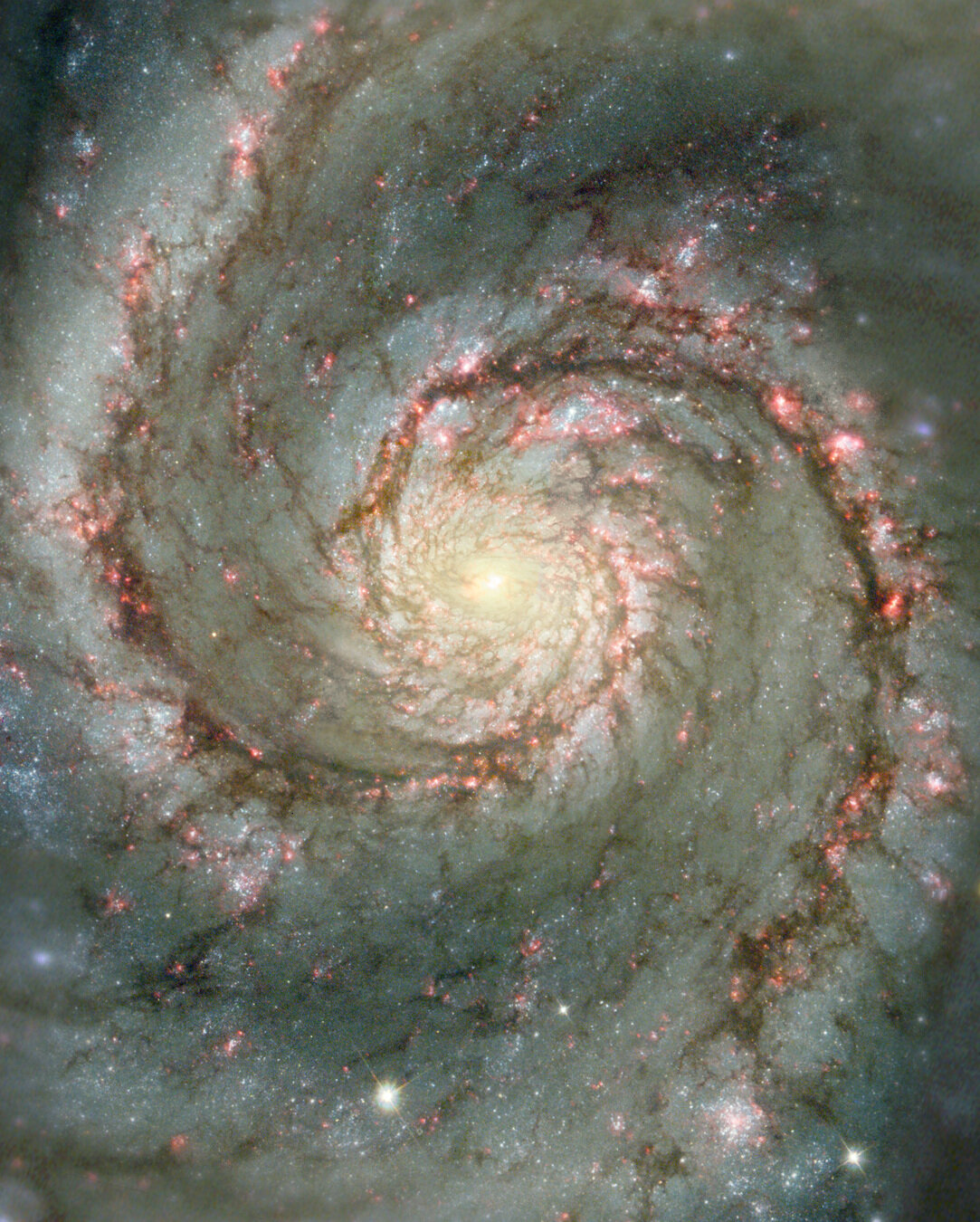
Stars & Planets (week 1)
Literature: Schulz, chapter 3 + 4
(see also: slides and videos by Troels Haugbølle from last year)
Michael Küffmeier
kueffmeier@nbi.ku.dk
Niels Bohr Institute
You find the original slides with videos included here: https://slides.com/kuffmeier/m
The interstellar medium

"parsec"
"astronomical unit"
(distance between Sun and Earth)
Hi-GAL: part of Galactic plane of the Milky Way
Interstellar medium is dynamic!
Brief overview of phases
- gas and dust between the stars
- building blocks of new stars
Gas appears in different phases (Schulz p. 36)
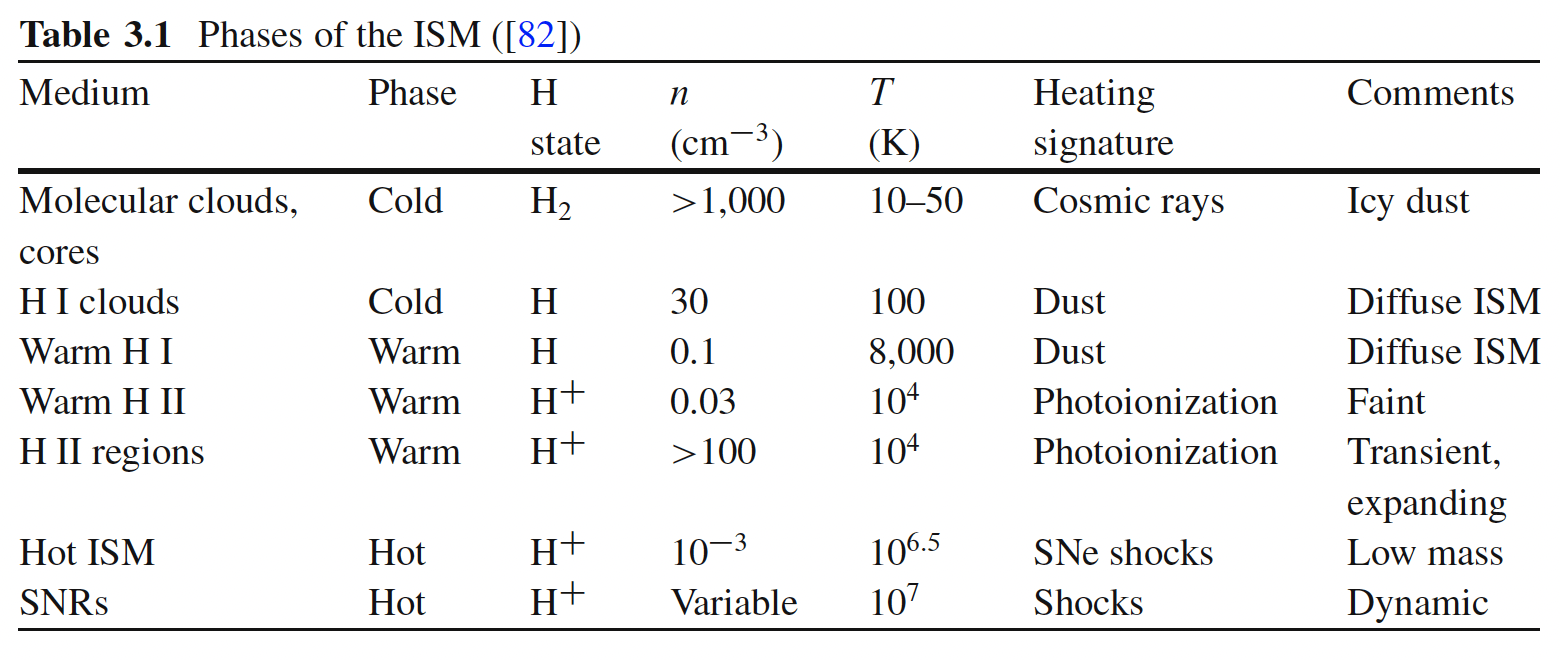
Q: Why is denser gas colder?
Interstellar Medium:
ISM
components & processes
- gas: mostly H and He
- dust: up to 75 % of heavier elements ("metals") are part of dust, carbon- and silicate-based, can be ice-covered, ~1% of gas mass
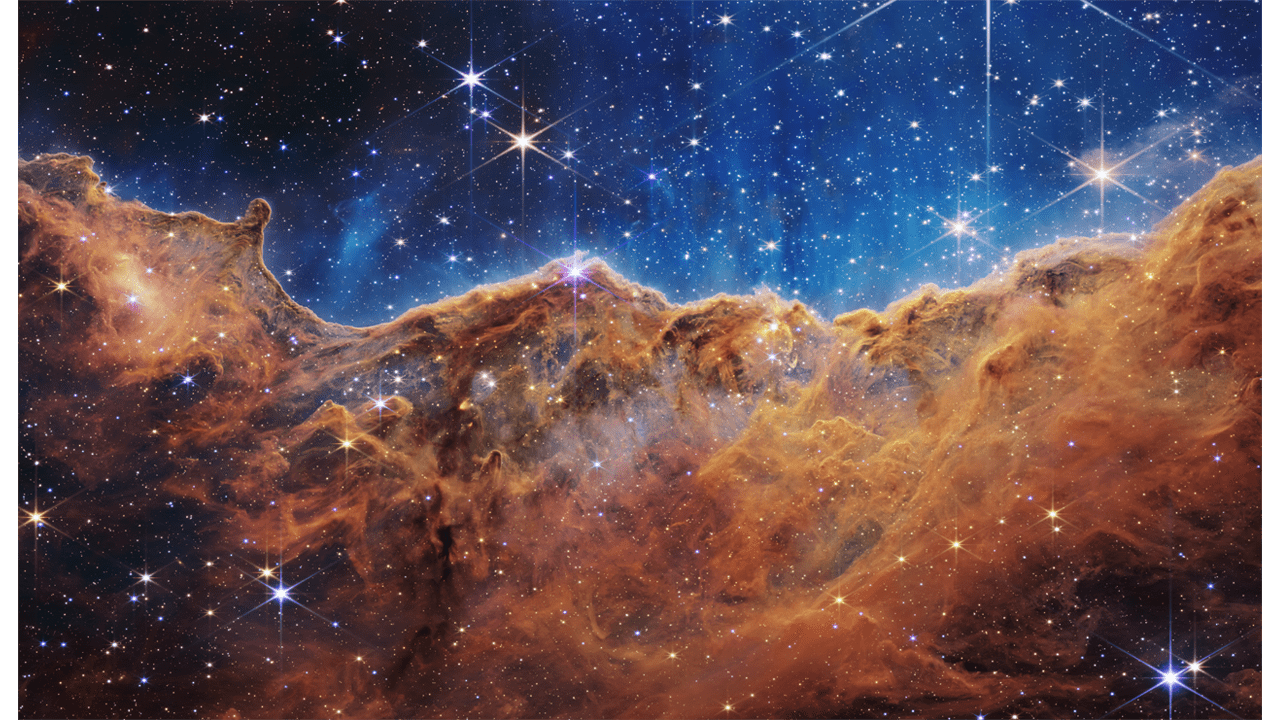
dust is important!
...and beautiful

ISM
components & processes
- gas: mostly H and He
-
dust: up to 75 % of heavier elements ("metals") are part of dust, carbon- and silicate-based,
in cold phase covered by ice

- radiation: stars, cosmic microwave background, thermal emission of dust, molecular and atomic lines
- cosmic-rays: high-energy particles produced in supernova shocks and of extra-galactic origin
- magnetic fields: dynamically important for all phases
- turbulence: gas moves subsonic in HIM, transsonic in WIM, supersonic in molecular clouds
ISM
energy density
- thermal:
- turbulence:
- magnetic:
- cosmic-rays:
- stellar irradiation:
- dust emission:
- CMB:
all components have about the same energy density!
...but there are huge fluctuations in contribution to various phases
ISM
energy density

- non-thermal pressure contributes significantly
- disk is in hydrostatic equlibrium
- disk in Milky Way is thin because
Element abundance
(in the Sun)*
- Hydrogen (X=0.7381) and Helium (Y=0.2485) are produced in Big Bang
- Other elements ("metals") (Z=0.0134) are produced by stars
- Most abundant (in per mille for the Sun): O (5.74), C (2.37), Fe (1.29), Ne (1.26), Mg (0.71), N (0.69), Si (0.67), S (0.31)
Note! abundances by mass (e.g., used to estimate mean molecular mass)
Alternative: abundance by number (important for radiation transfer & collisions)
To compute mean molecular mass:
Example: gas consisting of ionized hydrogen, helium and metals
*Asplund 2009

see also Schulz table 3.3, page 60
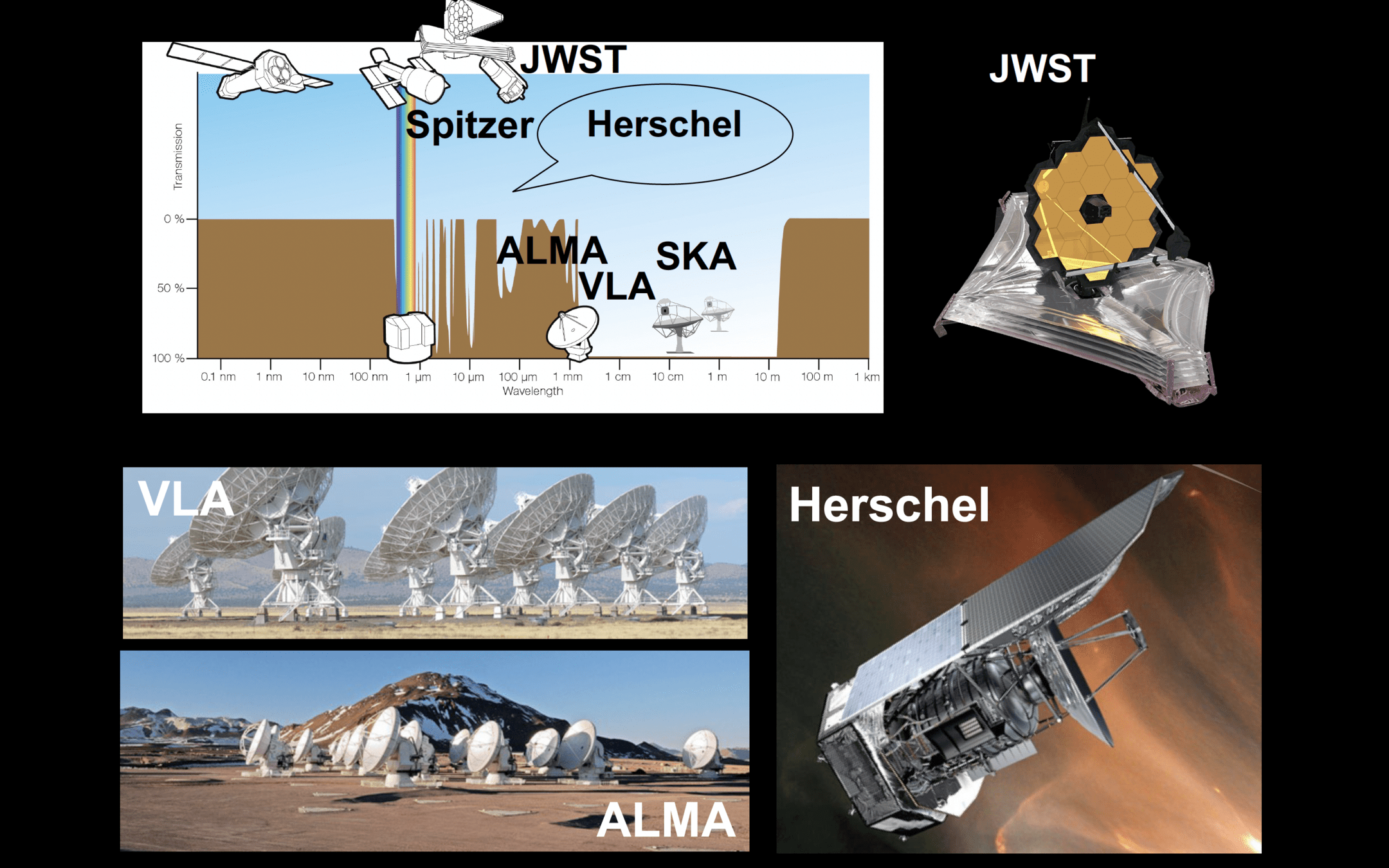
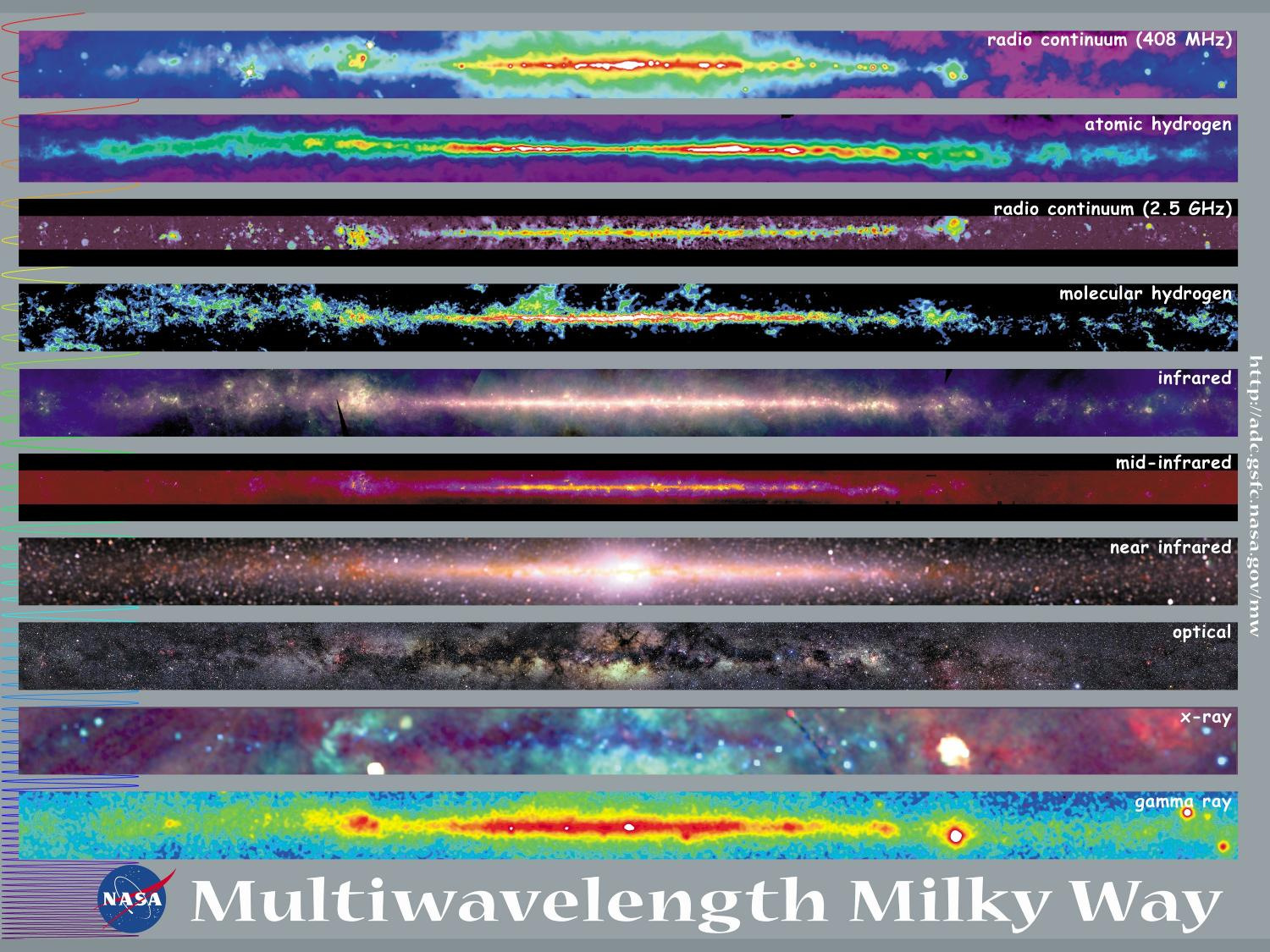






Hot ionized medium
Totally ionized gas
Tycho's SN in X-ray
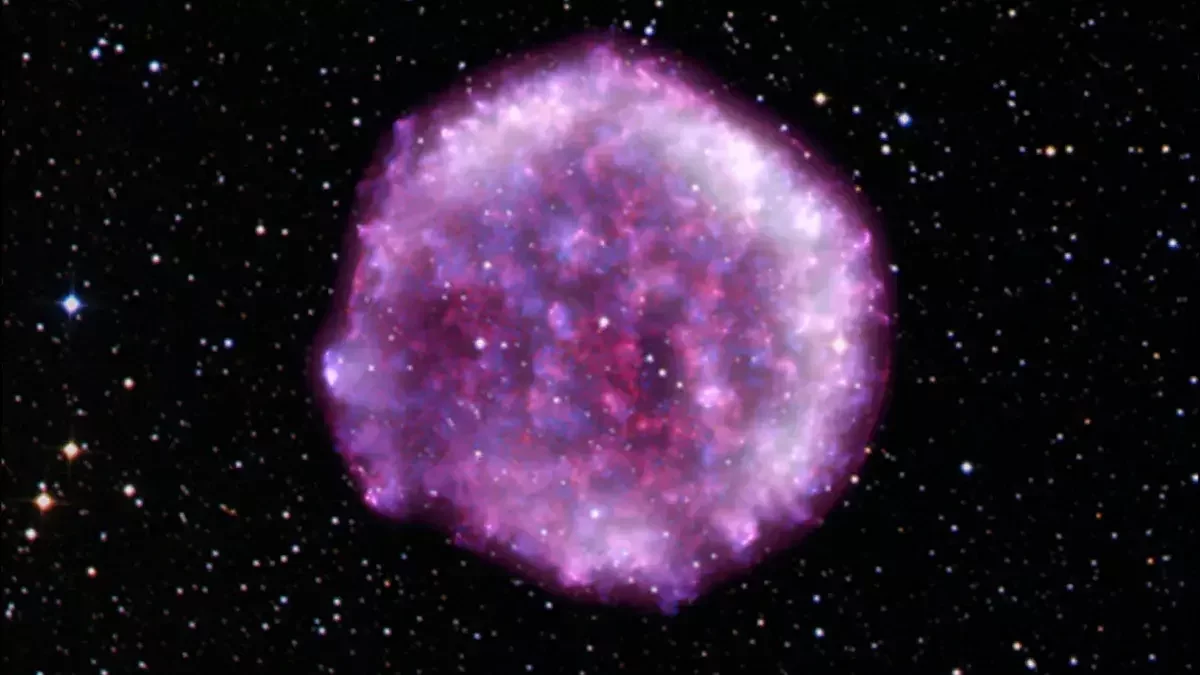
- supernovae heat up ISM to millions of K.
Groups can produce super bubbles
- cosmic rays in SNe shock waves provide extra pressure
- plasma rises from disk in galactic fountains
- above the plane, gas expands and cools,
the cold gas falls back on the disk
Milky Way: Filling factor: 20 to 70 % (?), mass (?)

Warm ionized medium
HII - ionized gas
massive O and B stars emit plenty UV
- origin of Strömgren spheres & large regions of ionized H
- hydrogen recombines to higher electron energy levels and emits blue H-alpha emission
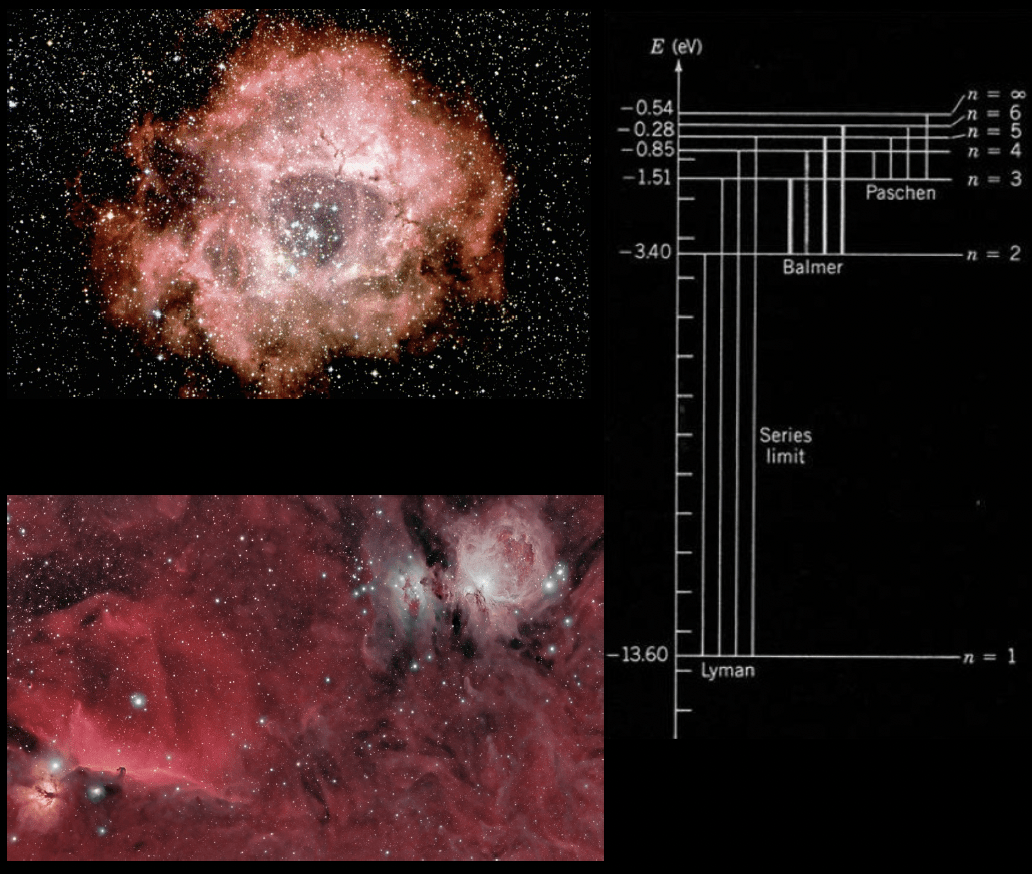
- large cross-section for ionising photons causes sharp transition to WNM in HII regions
Milky Way: Filling factor: 20 to 50 % (?), mass >
Warm ionized medium
HII - ionized gas
Milky Way: Filling factor: 20 to 50 % (?), mass >
seen via H-alpha line
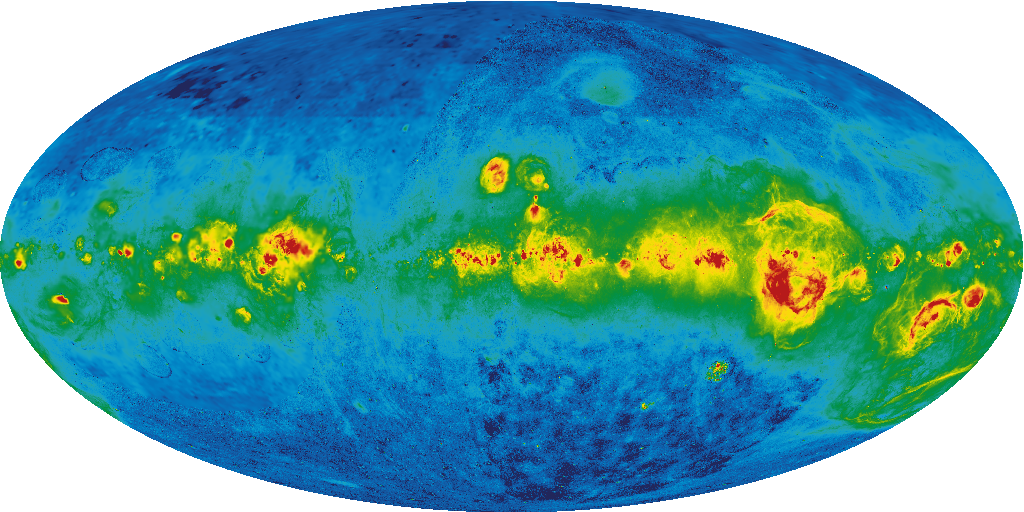
Finkbeiner 2003
Neutral medium
HI - neutral gas
Milky Way: Filling factor: 10 to 20 %, mass >
seen via 21 cm line
Finkbeiner 2003
-

ISM
structure & thermodynamics
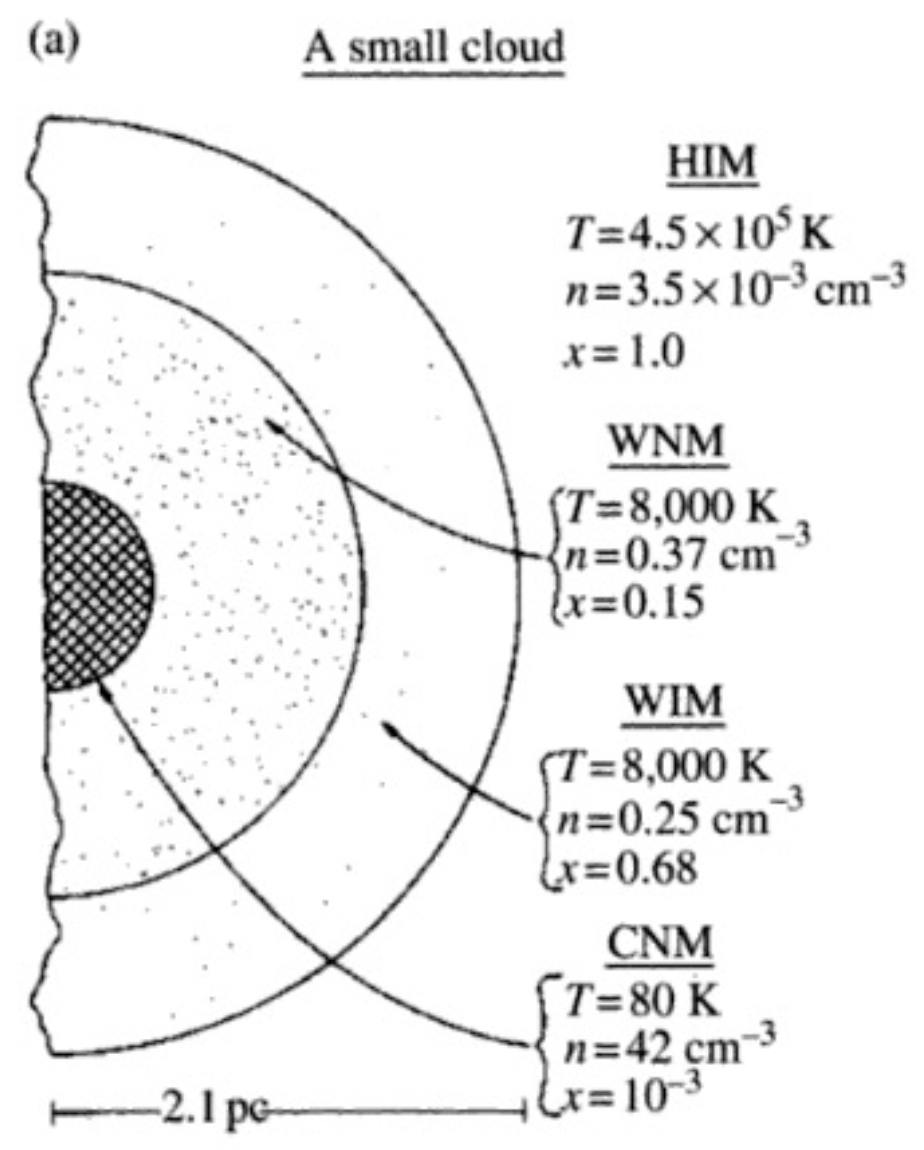
Tielens 2013
- absorption and shock wave -> heating
- emission due to collisions -> cooling
- chemical energy (e.g., recombination of hydrogen) -> thermostat!
- almost pressure equilibrium between the phases as long as gravity is negligible
ISM
structure & thermodynamics
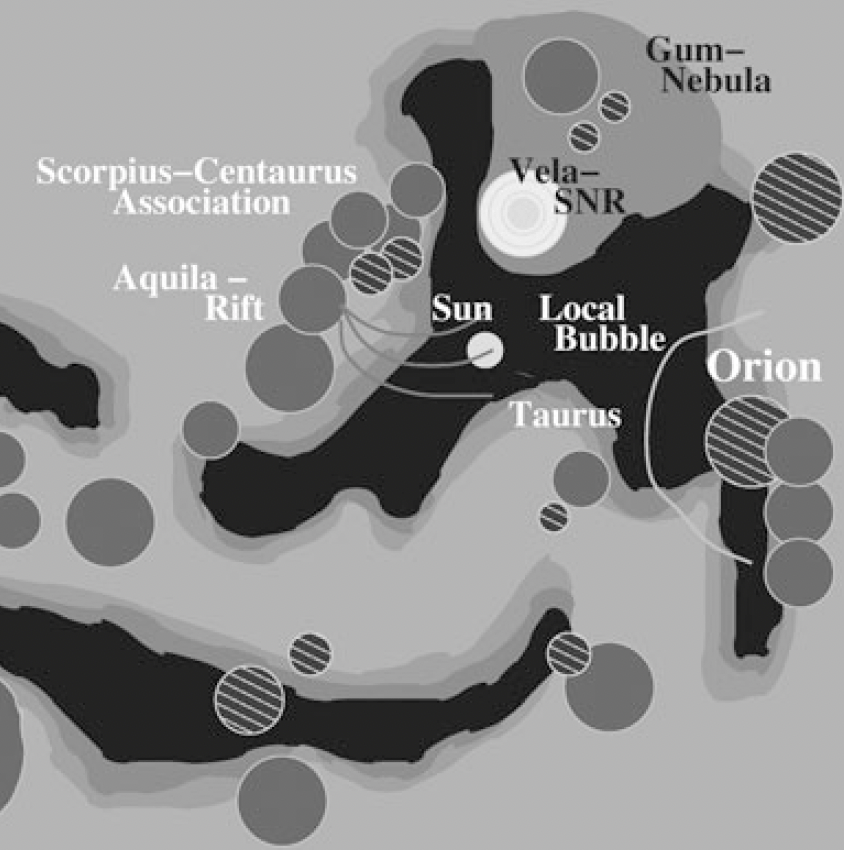
Schulz, page 37
in reality:
structure and environment are more complex
ISM
dynamic and very active
gas density
gas temperature
ISM
Molecular gas and dust

- stars form in such molecular clouds
- molecular hydrogen is the densest component of the ISM
- difficult to observe cold molecular hydrogen directly, but possible to trace dust (see JWST image in near-IR on the left) and/or CO molecules in sub-mm to radio
Milky Way: Filling factor: <1 %, mass ~
ISM
Molecular gas and dust

Dust

- responsible for reddening; depending on dust particle size
- emits and/or absorbs light, reemission in IR to sub-mm
- can cool or heat gas through collisions
- catalyst for chemistry in molecular clouds
- dust-to-gas ratio is approximately 1:100
ISM
Molecular gas and dust
Dust

- responsible for reddening; depending on dust particle size
- emits and/or absorbs light, reemission in IR to sub-mm
- can cool or heat gas through collisions
- catalyst for chemistry in molecular clouds
- dust-to-gas ratio is approximately 1:100
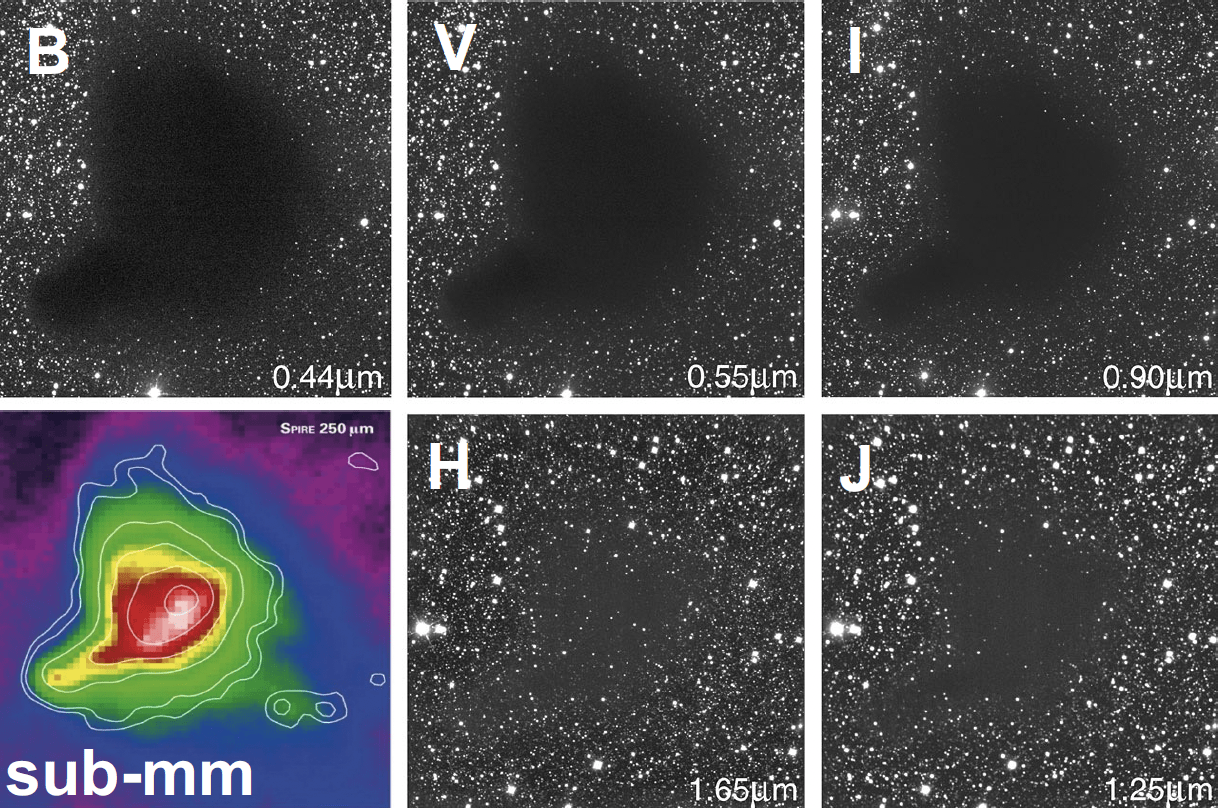
Reddening by dust
reddening happens throughout all observational wavelengths
- reddening depends on dust size distribution & chemical composition and it can vary significantly

- measurable by comparing observed magnitude with expected magnitude in two filters:
- visual extinction can be directly linked to difference in V (
)
Reddening by dust
computing E(B-V)
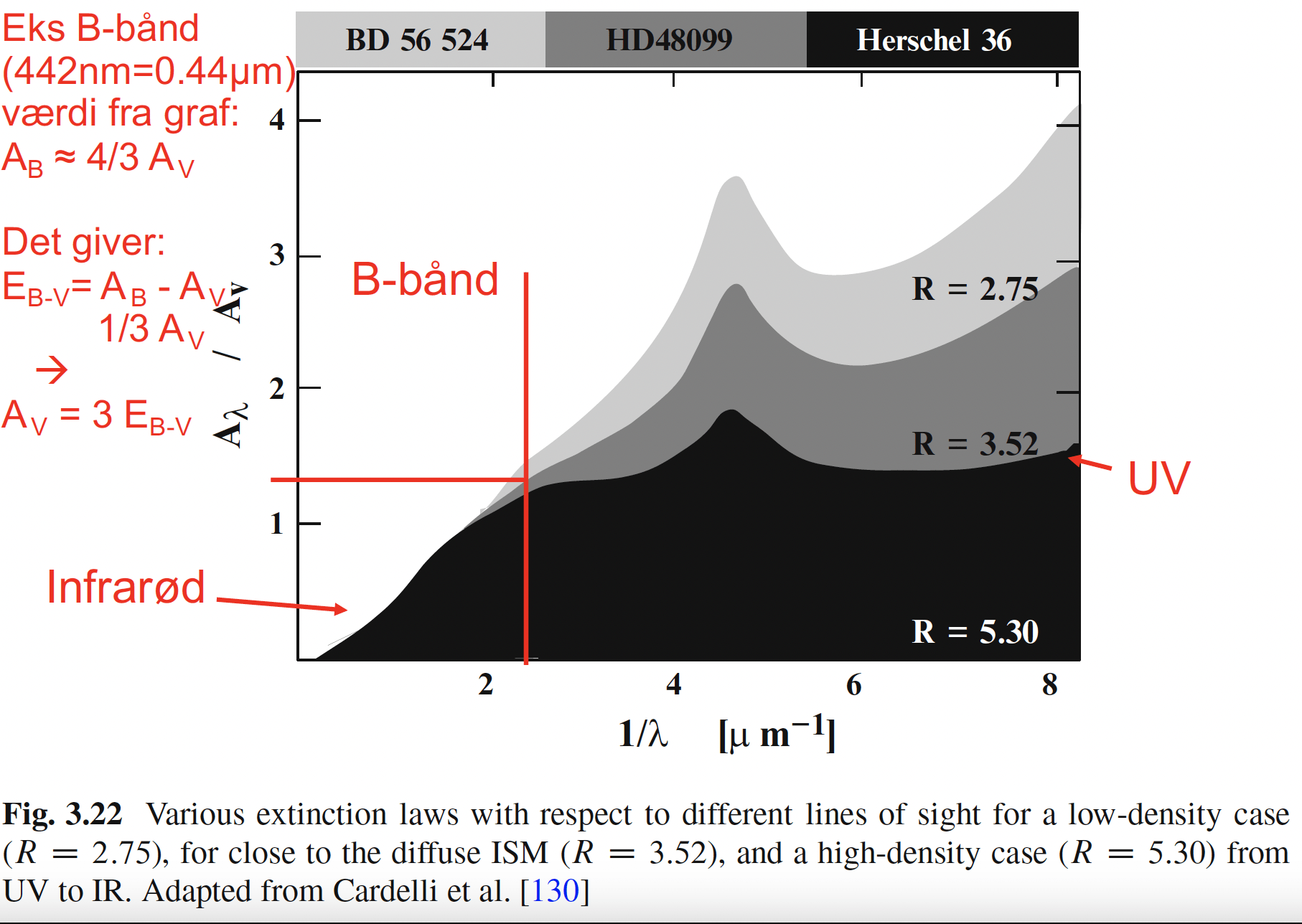
Depletion of metals in ISM
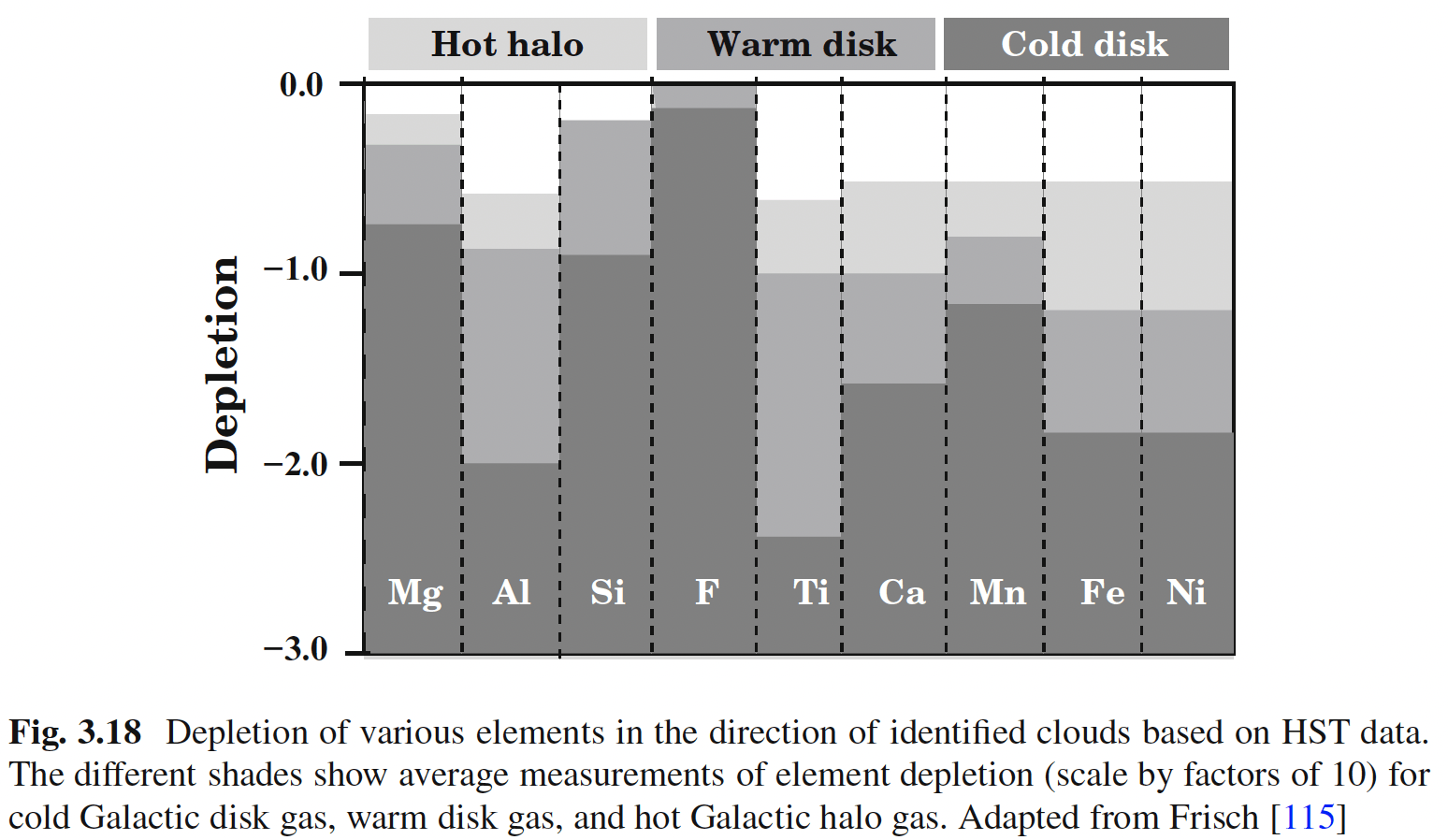
Reddening by dust
Dust and gas are generally distributed similarly
correlation between reddening by dust and gas (Schulz eq. 3.25)
As hydrogen is everywhere in the Milky Way, and extragalactic observations require to "look" through it, reddening is essential for almost all observations!
Accounting for reddening the magnitude-distance formula is:
GAIA 3D extinction map
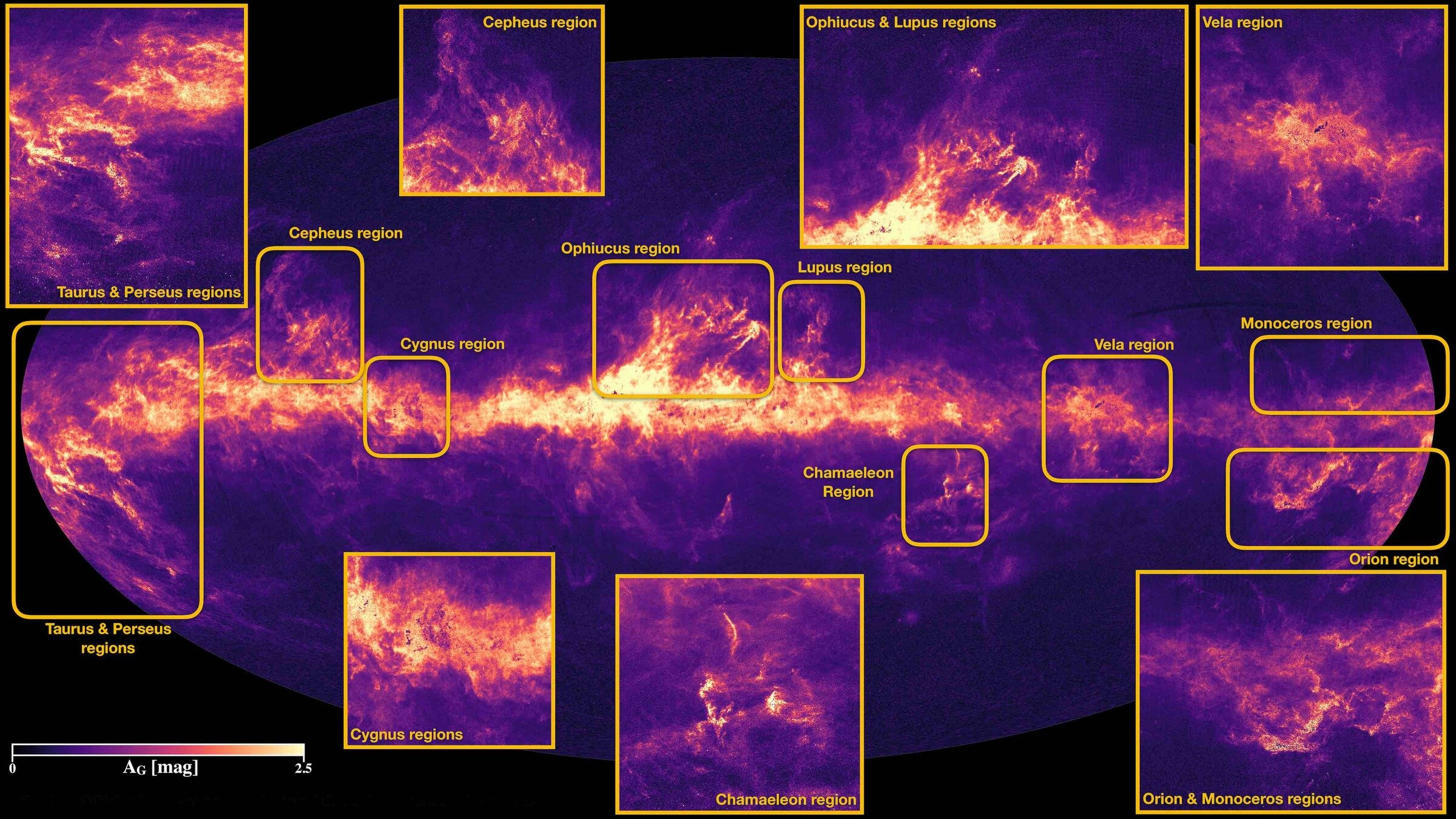
GAIA DR3: Delchambre 2022
GAIA 3D distances
By measuring reddening and distance to stars, we can also determine distribution of dust and distances to molecular clouds

Zucker 2019
Take-away
- Interstellar medium (ISM) consists of multiple phases:
hot ionized medium (HIM), warm ionized medium (WIM), warm neutral medium (WNM), cold neutral medium (CNM), molecular clouds (MCs)
- Approximately pressure equilibrium on large scales, but ISM is very dynamic with variations (thermal, chemical, radiative)
- Pressure depends on mass of gas in Milky Way's disk: other galaxies have varying pressures!
- The Milky Way is an open system; warm gas can be ejected while new gas can fall in
- Presence of dust requires us to go to large wavelengths to observe molecular clouds
- Dust occurs in all phases, but is most relevant in the cold phase and for reddened light
ISM_lecture_020924
By kuffmeier
ISM_lecture_020924
- 193



